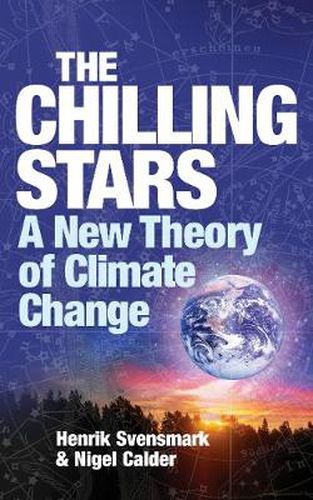Readings Newsletter
Become a Readings Member to make your shopping experience even easier.
Sign in or sign up for free!
You’re not far away from qualifying for FREE standard shipping within Australia
You’ve qualified for FREE standard shipping within Australia
The cart is loading…






On a clear, starry night you can catch a cold, and our ancestors were sometimes tempted to think that the Moon and the stars sucked heat from the Earth and made people ill. It was good observation but dodgy theorizing. Astronomers will now tell you that most of the bright stars are far hotter than the Sun. Yet when the biggest of them expire in mighty supernova explosions they spray the Galaxy with atomic bullets, the cosmic rays. As a result, those exploded stars do indeed chill the world, by making it cloudier.
Like other big discoveries, it seemed crazy at first. Who would think that the ordinary clouds that decorate the sky take their orders from exploded stars far off in space? Or that the climate obeys the swarms of atomic particles that rain down on us from the Milky Way? Many experts scoffed when the Danish physicist Henrik Svensmark linked those cosmic rays to clouds and temperatures, but investigations around the world confirm his theory, altering much of what scientists believed they knew about the weather, the climate, and the long history of life on the Earth.
To unwrap some of Nature’s best kept secrets, this book visits unlikely places, from the Atlantic seafloor to fossil-rich hills in China, and from the stormy Sun to the spiral arms of the Milky Way.
$9.00 standard shipping within Australia
FREE standard shipping within Australia for orders over $100.00
Express & International shipping calculated at checkout
On a clear, starry night you can catch a cold, and our ancestors were sometimes tempted to think that the Moon and the stars sucked heat from the Earth and made people ill. It was good observation but dodgy theorizing. Astronomers will now tell you that most of the bright stars are far hotter than the Sun. Yet when the biggest of them expire in mighty supernova explosions they spray the Galaxy with atomic bullets, the cosmic rays. As a result, those exploded stars do indeed chill the world, by making it cloudier.
Like other big discoveries, it seemed crazy at first. Who would think that the ordinary clouds that decorate the sky take their orders from exploded stars far off in space? Or that the climate obeys the swarms of atomic particles that rain down on us from the Milky Way? Many experts scoffed when the Danish physicist Henrik Svensmark linked those cosmic rays to clouds and temperatures, but investigations around the world confirm his theory, altering much of what scientists believed they knew about the weather, the climate, and the long history of life on the Earth.
To unwrap some of Nature’s best kept secrets, this book visits unlikely places, from the Atlantic seafloor to fossil-rich hills in China, and from the stormy Sun to the spiral arms of the Milky Way.